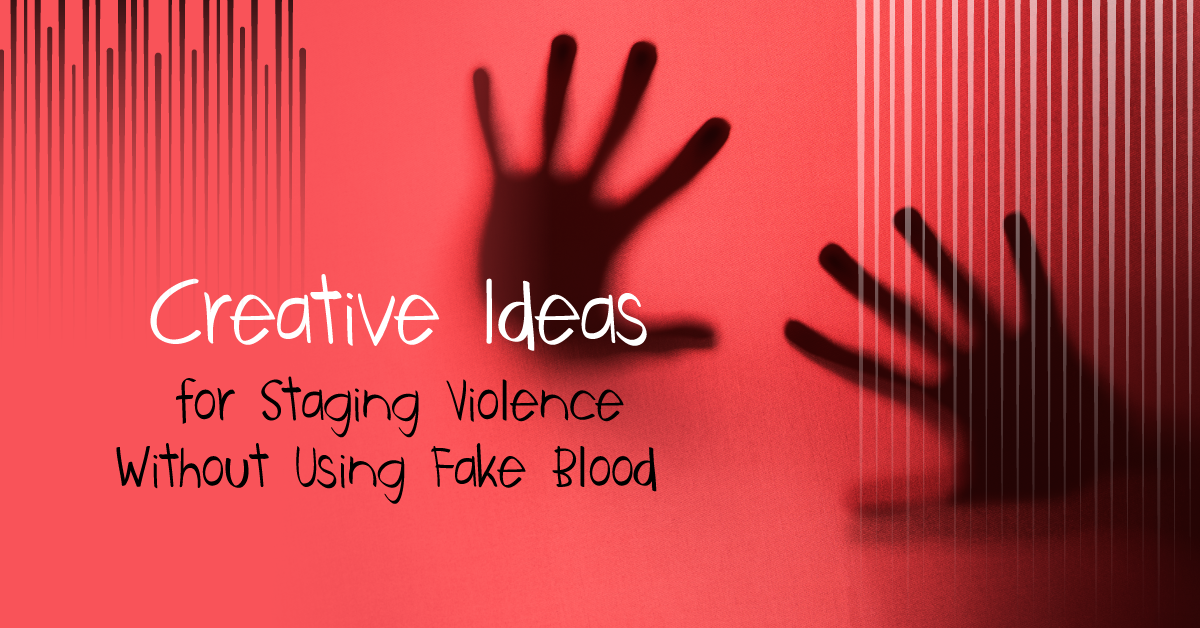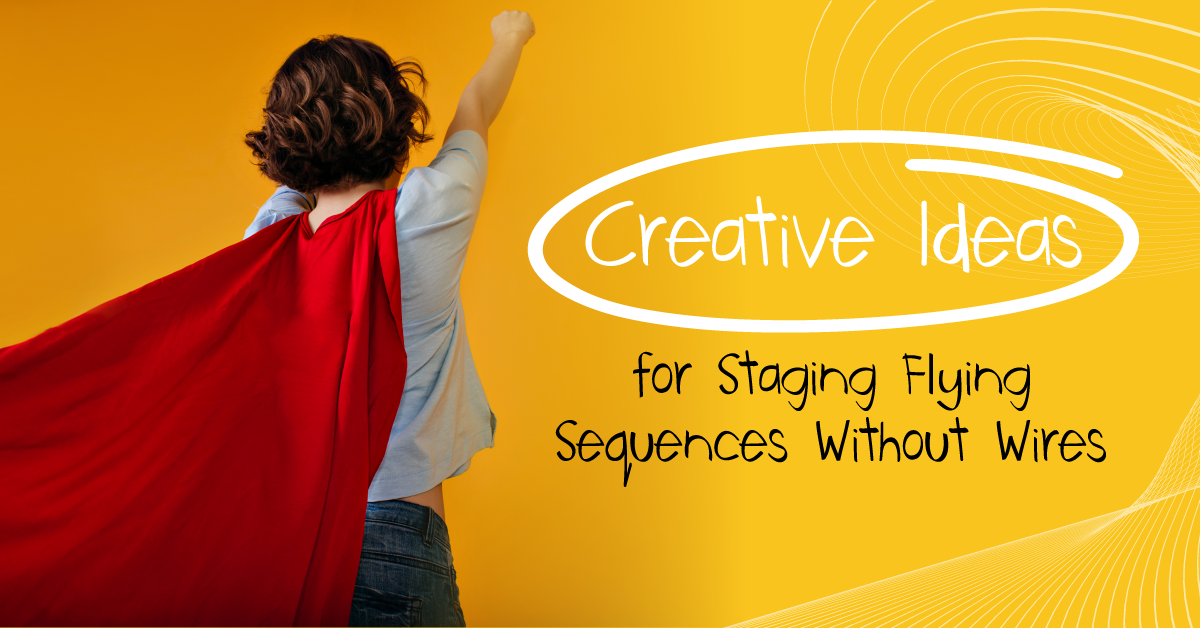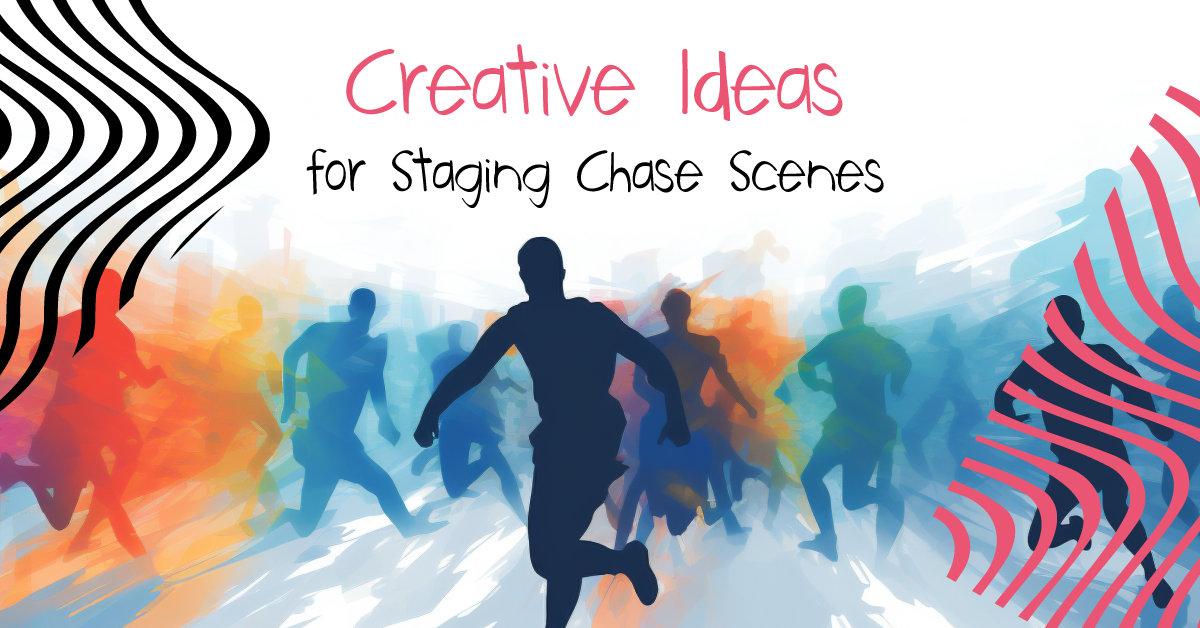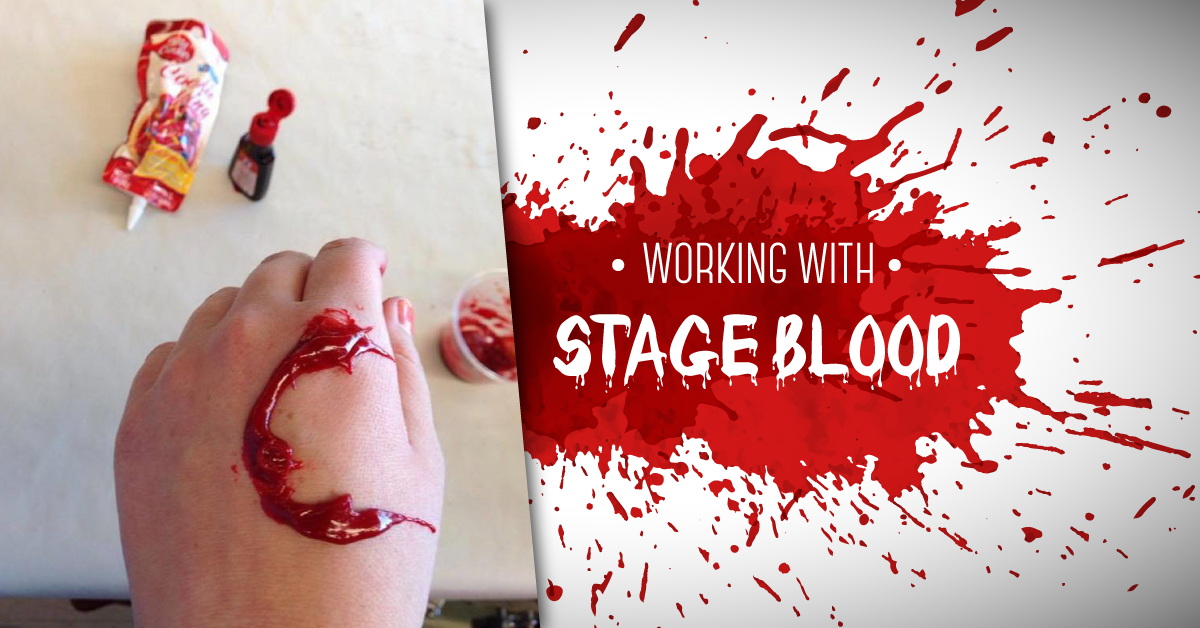Creative Ideas for Staging Violence Without Using Fake Blood
The visual of blood onstage creates an immediate visceral reaction for audience members — it evokes feelings of fear, pain, injury, life and death. But using fake blood onstage can be challenging, and this is coming from a fight director who works with fake blood often. Even the highest-quality fake blood is messy, sticky, and gets everywhere, no matter how carefully you use it. It can be expensive (depending on how much you need), time-consuming in terms of laundry, and carries safety risks, such as slipping onstage and potential allergic reactions. However, there are many great alternatives for staging scenes that call for blood. Let’s take a look at some of them:
1. Lighting and projections can be very effective for creating the image of blood onstage. Use a focused spotlight with a red gel to make a small pool of blood appear in a specific area onstage; or have an actor stand, sit, or lie in the red spotlight for a dramatic visual. A red wash across the entire stage is great for war, battle, massacre, or major death scenes. Using blackouts or strobe lighting effects can increase the feeling of tension in an already frightening atmosphere. A video projection of blood dripping, pouring, splashing, or spattering (combined with some startling sound effects or spooky music) is a great way to create a terrifying or dramatic effect onstage.
2. You can create wounds of all types — cuts, gunshots, blisters, scars — with makeup. There are many techniques and appliances you can use that don’t require students to go onstage with wet fake blood on them. The Drama Teacher Academy has many lessons about makeup application, including a full unit on blood, blisters, and bruises. Before working with makeup, be sure to have students do a patch test to check whether their skin will react to any products.
3. Costuming is a great way to create a blood effect onstage with less mess. Use fabric paint to create wounds, cuts, slashes, or spatters on costumes. Allow lots of time for the costumes to dry before putting them on the actors. Be sure to do a test swatch on a similar type of fabric to check for colourfastness (especially if you’re working with particularly sweaty students) and to ensure the blood effect looks realistic. If you’re picky, oxygenated (arterial) blood is bright red, while deoxygenated (venous) blood is dark reddish-purple.
One way to use costuming for blood effects is to layer your costume items, as in, have a pre-made bloody undergarment like a t-shirt or muscle shirt under a jacket or hoodie, and open the outer garment to reveal the blood. Or, you can have two identical costumes: one clean and pristine for before any violence happens, and one for after the violent moment that the actor will change into. Alternatively, you can have the actor using a bloody costume hold their hands over the wound, and slowly lower their hands to reveal the bloody patch.
When I directed a production of Carrie: The Musical with high school students, for the famous blood-drop effect, our costume team made a special double-layered prom dress for the actress playing Carrie. The bottom layer was pre-bloodied using fabric paint, and an identical clean dress was opened down the side seam, layered on top of the pre-bloodied dress, and attached with magnets. When the moment occurred, the lights flashed and then blacked out, and the actress quickly whipped off the top dress layer (assisted by the actor playing Tommy Ross) and handed it to an ensemble cast member, who whisked it offstage to an ASM. When the lights came back up, Carrie appeared suitably bloodied up. It was an awesome moment, and we rehearsed it a lot to make it as seamless as possible.
For a more stylized production, an actor could add a red accessory to their costume, such as a sash, cape, or jacket, or change a different coloured accessory they’re currently wearing to an identical red accessory, to indicate that they have been wounded or killed.
4. You can also create great bloody imagery using props. Weapons can be painted with red spots and spatters to create a frightening effect. A handkerchief painted with red fabric paint can be tucked into a pocket, whipped out, and held against an actor’s body to make it seem like they’re stanching or cleaning a bloody wound. If you have students who are great dancers, they could use large pieces of red fabric or red gymnastics ribbons to choreograph a “dance of violence” or “dance of death.”
If you want a dramatic or stylized representation of blood, you could use long red ribbons or streamers, red silk handkerchiefs or red play silks, large red mylar or foil confetti, or even rose petals (silk or real). If you’re dropping the items from a height, do tests with the materials to see how the items fall (or float) and how much of each item you’ll need for the run of the show. It may take a combination of materials to make the blood drop work at the speed you want it to appear.
If none of these suggestions appeal to you and you still want to use actual fake blood for your upcoming production, I strongly suggest you contact a qualified fight director to assist with acquiring a good-quality fake blood product, teaching students how to safely use it, and choreographing the blood moments so they are safe, repeatable, and look great.



